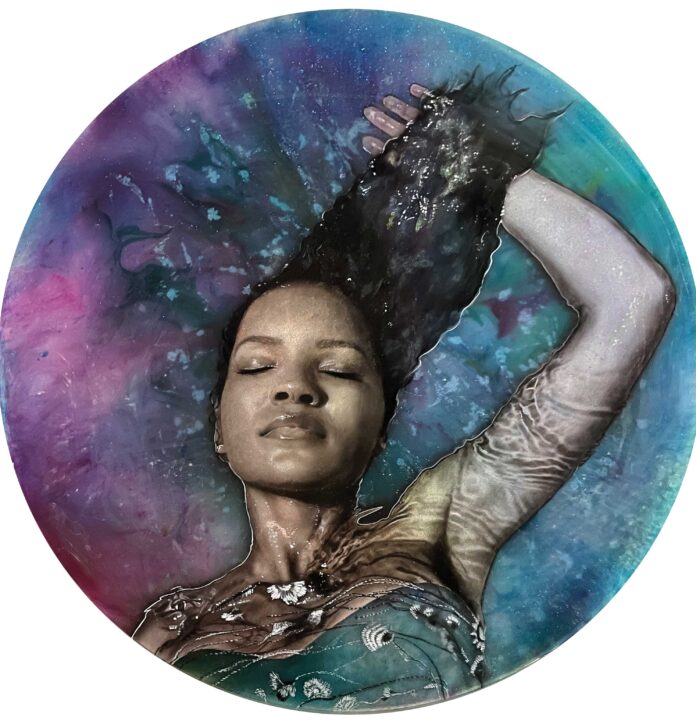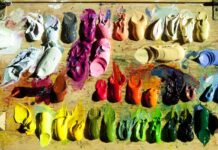
There is a lot of superb contemporary realism being made these days; this article by Allison Malafronte shines light on a gifted individual.
Marissa Ooserlee (b. 1981) is recognized the world over for her hyperrealistic portrayals of women submerged or floating in water, a symbolic representation of the passing of time and life’s changing tides. Her preoccupation with water and the ocean is apropos, considering that “Marissa” means “from the sea/mermaid” in Latin and that another of her other passions is raising awareness and funding for environmental causes.
Currently residing in Spain, Oosterlee grew up in the Netherlands and was always an artist at heart. At 20, she found her way back to the studio after sustaining a serious injury on the road to becoming a semi-professional cyclist. Today Oosterlee creates polished, glistening portraits of women in the sea using an airbrush technique with either oil or acrylic paint.
In 2019, the artist began a series of paintings called “Washing Away My Sorrows,” using water as a symbol of purity, clarity, and tranquility. “This series was originally based on my own feelings involving personal issues (health, past relationships, and family matters) and also on my active involvement in environmental issues, particularly ocean life,” Oosterlee explains. “It grew from there and became about the empowerment we experience when we remove ourselves from the fires that forge and shape us as women.”
In 2020, at the height of the BLM movement, a woman named Saraa Kami contacted Oosterlee to say how much she admired her art, and also to ask why it never featured women of color. “She had just posted a preview of some upcoming releases,” Kami recalls. “As a longtime follower of Marissa’s work, I felt slighted and reached out. Much to my surprise, she responded right away. Shortly after, we chatted on WhatsApp and she heard me out.”
Oosterlee told Kami that George Floyd’s recent death had struck a deep chord and she was ready to make a shift toward more diversity. In the next few months, she partnered with Kami to create an additional segment to the “Washing Away My Sorrows” series, of which Hope is a part. Kami secured a group of models of color, photographed them, and sent the results to Oosterlee to work from. “I’m not a professional photographer, just a woman of color who wanted future generations to see beautiful depictions of women of color hanging on the walls of museums and galleries,” Kami says of their collaboration, for which she willingly volunteered her time.
“’Washing Away My Sorrows — BLM’ was my attempt to place the beauty of all women on full display,” Oosterlee shares. “Although I’ve always celebrated the beauty of black and brown women as a person, admittedly that wasn’t always evident in my work. So being a part of the healing process for brown and black women is something I’m extremely proud of.
“I’m also excited for the other paintings in this series to be introduced, and for the world to behold the beauty of a human being on its face, not by placing an adjective before it. Our ethnic identities are just that, and the only race that exists is the human race. That is what ‘Washing Away My Sorrows — BLM’ is all about: seeing and celebrating beauty.”
This contemporary realism article was originally published in Fine Art Connoisseur magazine.
- Become a Realism Today Ambassador for the chance to see your work featured in our newsletter, on our social media, and on this contemporary realism site.




